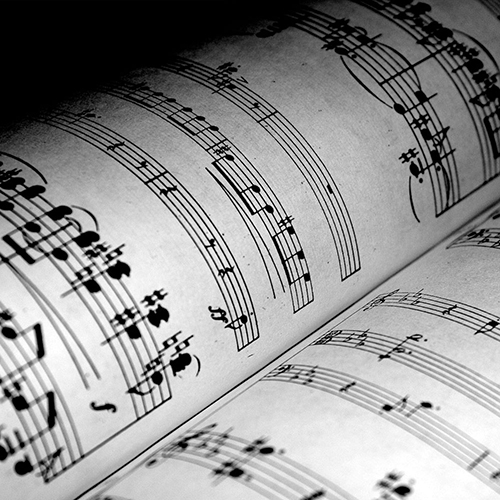Moon down (for Boudewijn Buckinx) is a four-movement piece based on mediaeval Japanese Zen poetry. The
piece exists in several versions, including those for violin and piano, clarinet and piano and alto saxophone and
piano. As the title indicates, the work is a tribute to the outstanding Flemish composer and writer (and a person
whom I am privileged to call my friend) Boudewijn Buckinx, and whose post-modern æsthetics is one of the most
fascinating phenomena on the European New Music scene today.
This particular version, for flute and piano, was created in 2002 for and is dedicated to the wonderful Swiss
flautist Isabelle Schnöller, whom I met in November 2001 during the NuMuFest in Toronto. There, her performance
of Robert Aitken’s flute concerto Shadows V was so brilliant and powerful that I immediately decided to
offer her a piece for possible inclusion in her repertoire.
Each of four movements of Moon down is based on a different technique. In Movement I it is consonant dyads
(thirds and sixths) as well as augmented and diminished triads that make up the harmonic fabric. Here, the
flute line is derived from the piano harmony. The poem by Eun (1232-1301) implies timelessness and, paradoxically,
awe of the fleeting moment, which music tries to capture: Unaware of coming, going, / I turn back alone, /
Caught in the midnight sky, / The moon silvering all. In Movement II, again, the flute and the piano are in harmony,
making use of the specific tertiary twelve-tone row divided into progression of seventh chords. The expressive
aura evoked by the poem by the famous Dogen (1200-1253) is, perhaps, that of time passing and nostalgia: There
in the midnight water, / Waveless, windless, / The old boat’s swamped / With moonlight. In Movement III both
instruments share the same suspended melodic line, while in piano’s middle register there appears a monorhythmical,
restless yet subdued, scalar canon in contrary motion. The poem by Getsuo (XIV century) explains all: Sea
touches sky, and now, moon down, / Waves are mirrors once again. / Through the still night, songs from small
boats, / People stirring at their windows. In Movement IV perfect harmony between both instruments returns. In
it the music is based on the twelve-tone row consisting of major and minor triads. If the flute’s line is horizontally
twelve-tone throughout (but entirely compatible with the triadic accompaniment), the piano’s harmonies clearly
allude to tonal harmony of decidedly Brahmsian flavour. Here, the music tries to reflect the meaning of the superb
poem by Ikkyu (1394-1481) in which one detects quiet astonishment and satisfaction of being able to perceive
and savour the outside world, at no matter what price: After ten years in the red-light district, / How solitary a
spell in the mountains. / I can see clouds a thousand miles away, / Hear ancient music in the pines.
Piotr Grella-Możejko

